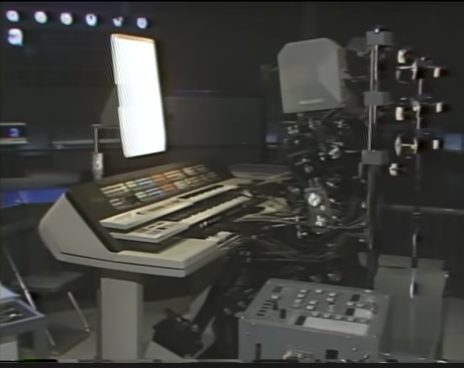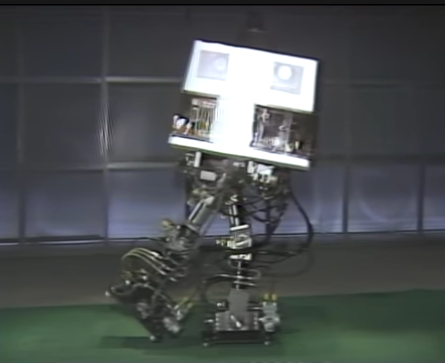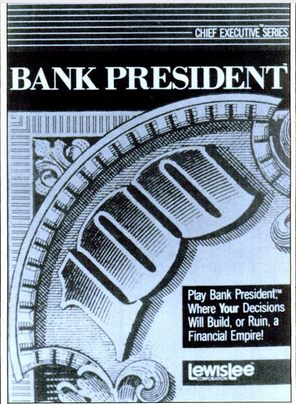Computer Chronicles Revisited 40 — Tsukuba Expo '85
In 1963, Japan’s government decided to build a planned scientific community about 35 miles north of Tokyo that would meet the country’s growing demand for high-tech research and technology. Known as Tsukuba Science City, the site today is home to roughly 150 research, educational, and high-tech business institutions. From March to October of 1985, Tsukuba also hosted a world’s fair called Expo ‘85, which was the sole focus of our next Computer Chronicles episode.
Not Just a County Fair, Not Just a Europe Fair, But a World’s Fair!
This episode departed from the usual studio format. It consisted almost entirely of narration over footage of various exhibits at Expo ‘85 with excerpts from interviews of two of the participants. Here are some of the highlights:
- Stewart Cheifet did his cold open from outside the Expo where Sony premiered its JumboTron video board, which he described as the “world’s largest television set” at nearly 14 stories high.
- Robotics was a major focus of the Japanese exhibitors. For example, Toshiba displayed its “multi-jointed top spinning robots,” which were touch sensitive and accompanied by an eight-jointed inspection arm equipped with 104 sensors and capable of 18 degrees of movement. It even had a camera to watch over the other robots!
- Fujitsu had its own “giant performing robot” called “FANUC MAN” that was 5 meters tall and weighed 25 tonnes. FANUC could build a miniature model of itself and also lift a 200 kilogram barbell.
- Fujitsu also displayed an “automatic multilingual news service,” which provided instant translation of English-language news feeds into French, German, and Japanese.
- Not to be outdone, NEC Corporation demonstrated its own voice recognition and reproduction system that promised simultaneous translation of spoken words.
- The Soviet Union’s pavilion displayed a personal computer that featured voice recognition and translation. Bidniouk Sviatoslav of the Kiev Institute of Cybernetic Engineering explained through a translator that the machine synthesized several Indo-European languages and could understand 200 different commands. It could answer only to the voice of the operator.
- Italy’s pavilion had a “painting analyzer,” that could measure the layering of paint and determine if a given painting was genuine or a fake.
- France showed a model of its Minitel, a small computer terminal designed to link homes to computer databases. France was also one of the few non-Japanese exhibitors to display a robot.
- The West German and Japanese national telephone companies displayed their own respective multi-service communications terminals that promised the ability to transmit pictures over fiber-optic telephone lines.
- Japan Airlines sponsored a high-speed service or “bullet” train to transport people around the Expo site. The trains floated above the track on a magnetic cushion and could reach speeds approaching 300 km/hr.
Personal Robots by the Year 2000?
The next segment featured the work of Professor Ichiro Kato of Tokyo’s Waseda University, who was one of Japan’s foremost experts in robotics. There was an extended demonstration of Kato’s WABOT-2, a humanoid robot that could read a musical score and then play it on an electronic keyboard using five-fingered hands.

Cheifet explained that Kato had been working on anthropomorphic robots for the past 20 years, starting with replacement parts for the human body. Kato believed that the “real era” of robots was fast approaching. Through a translator, he told Cheifet that in 20 years–the start of the 21st century–robots would be more than just factory machines. There would be personal robots for offices and homes. Current factory robots were not very flexible. To perform human tasks these future robots would have to resemble humans in both shape and action.
Cheifet noted that WABOT-2’s movement was controlled by 80 microprocessors arranged in a hierarchical manner similar to the human nervous system. Kato elaborated the robot had 50 degrees of movement, more than any previous robot. Each joint contained a one-chip microcomputer. Fifty of these chips formed a software-servo system that took the place of hardware to obtain feedback. WABOT-2 was then made up of various sub-systems, including left and right arms and legs, as well as sound and vision.
While building a human-like robot to play a synthesizer might seem like an unnecessarily complicated way of using a computer to generate music, Cheifet said there was a reason for this “circuitous method.” Kato told him this was the best way to establish the basic technology for building 21st-century robots.
Another Kato design featured at the Expo, the Waseda Hitachi Leg 11 (WHL-11), was a walking biped robot that weighed 120 kilograms. Cheifet noted the robot required enormous strength just to move. Each of the WHL’s “hips” contained a hydraulic power source and a microcomputer.

Kato also designed a four-legged walking robot that had the special ability to climb stairs. The professor said that since there were always three legs supporting the robot, it was a simple machine compared to the biped WHL-11. He noted that human beings had a similar evolution, from walking on four limbs to just two.
Cheifet said Kato believed that the personal robot was the next logical step after the family car and the personal computer. But there were some obstacles along the way. Kato said the advance of technology would accelerate and nothing would stop that. When it came to the society that would use that technology, however, individuals might not be able to change their consciousness as rapidly. If this gap became wide enough, Kato said, it would prove catastrophic. We must therefore find a way to change how people will react to the robots. Kato emphasized that robots were machines and not living beings, and it was important not to lose the distinction between the two.
Were Robots the Solution to America’s Future Labor Shortage?
In his closing commentary, Paul Schindler said the Japanese were so far ahead of the United States when it came to robotics that it was hard for Americans “to see their dust.” Schindler suggested this was due to Japan’s labor shortage, which necessitated the quicker development of industrial robots. The United States would face a similar crisis, he added, when baby boomers like himself got older. So right now, the Japanese needed robots and America did not. But when the time came, the U.S. would “unleash that old-fashioned American know-how” and steal every robotic idea from Japan that “was not tied down.” By the turn of the century, Schindler said we’d probably see Japanese newspapers talking about how America was “imitating, not innovating” when it came to robotics.
IBM Bundles Free Software as AT Clones Continue to Hit the Market
Stewart Cheifet presented this week’s “Random Access,” which is dated in early May 1985.
- IBM was now bundling free copies of its word processing and spreadsheet programs–plus TopView–with the IBM PC XT. Cheifet said software houses and dealers were crying foul, fearing that PC customers would no longer buy third-party software.
- IBM also ended its deal with Epson to make printers for its PC line. IBM planned to make its own low-cost printer called the Proprinter, which would sell for $549 and run at three different speeds. IBM also introduced a color inkjet printer.
- For its part, Epson announced a new dot-matrix printer, the Homewriter, which was expected to sell for under $200.
- At the recently concluded spring COMDEX show in Atlanta, last-minute exhibitor Atari Corporation showed off the first production models of the 520ST.
- Zenith Data Systems announced its new PC-AT clone, the Zenith Z-200, which promised speeds of up to 30 percent faster than the IBM model. Cheifet noted there were now a number of AT clones on the market, including offerings from Compaq, Kaypro, and Texas Instruments, with Tandy and Hewlett-Packard expected to enter the fray soon.
- Two firms said they had developed new computers that could run parallel processing at speeds approaching that of a more expensive supercomputer. One of these machines, the BBN Butterfly, linked together 128 Motorola 68000 microprocessors to accomplish speeds of 60 million instructions per second. The other machine, the Connection, coupled 1,000 chips each containing 16 microprocessors to achieve speeds of 250 million instructions per second. Intel also said it would produce its own parallel processing computer that used 128 chips to run 100 million instructions per second.
- Paul Schindler presented his weekly software review, this time for Bank President (Lewis Lee Corp., $75), which he called “one of the most interesting yet strangest simulation games” he’d ever seen. As the name suggested, this was a simulator where you played the CEO of a bank. You could play against other humans or the computer. Schindler claimed the game was so addictive that at least “one major bank has banned it entirely.”

- Logical Business Systems announced a new add-on board for the IBM PC called VoiceCommand that promised voice recognition capabilities. Cheifet said the system had a vocabulary of 32,000 words and essentially turned any software program’s keyboard commands into spoken commands.
- Apple lowered its 1985 sales projections and acknowledged the layoffs of 75 workers, as well as the elimination of 1,500 part-time jobs.
- Blue Cross and Blue Shield of Maryland announced a new laser ID card for its health insurance customers. The card could carry up to 800 pages of medical history, including a record of past medical problems, digitized X-rays, and complete insurance information.
- General Motors was still deciding what state to build its new $3.5 billion plant in to manufacture the new Saturn car. GM said it would turn the final decision over to computer, although humans would intervene if the computer came up with a tie.
- Two hackers in Santa Cruz, California, said they developed a computer program that could “beat the house” at roulette by analyzing the friction characteristics of a particular wheel, resulting in a 44 percent advantage to the player.
- A poet, Michael Newman, developed a program called The Poetry Processor, which could help users write poetry by automatically analyzing meter, cadence, and alliteration. The software also contained a built-in rhyming dictionary.
- Going a step further, the developers of another new program called RACTER said their software could write its own books. The software had already been used to create its first book, The Policeman’s Beard Is Half-Constructed.
Expo Draws Over 20 Million During Six-Month Run
As I noted in the introduction, Expo ‘85–formally the International Exhibition, Tsukuba Japan 1985–ran from March 17 to September 16, 1985. According to a report from the U.S. Department of State on the Expo, the final visitor count exceeded 20.3 million for the six-month period, which met the organizer’s goal of 20 million. A total of 47 countries and 37 international organizations participated in the Expo. The United States pavilion, which covered over 32,000 square feet, focused on artificial intelligence as its theme.
The only featured guest in this episode was Waseda University Professor Ichiro Kato, who passed away in 1994. More than a decade before the WABOT-2 made a splash at Expo ‘85, Kato previously developed the WABOT-1 in 1972. According to Teckexperts.com, the WABOT-1 was the “world’s first full-scale humanoid ‘intelligent’ robot.”
Notes from the Random Access File
- This episode is available at the Internet Archive and has an original broadcast date of May 14, 1985.
- Gary Kildall did not appear in this episode, and in fact there was no co-host as Stewart Cheifet only presented brief interstitial segments from the KCSM studio. Robin Garthwait also narrated a short B-roll segment introducing Science City and the Expo.
- Following its debut at Expo ‘85, The Sony JumboTron became an ubiquitous presence in sports stadiums. According to an article published by Frank Gatto and Associates, however, Sony was not the first to experiment with this type of large screen display: Mitsubishi actually debuted its own giant display at Los Angeles’ Dodger Stadium in 1980.
- Although Paul Schindler mentioned one bank forbidding its employees from playing Bank President, the program apparently was used as a training tool in the industry. A February 1986 InfoWorld article by Scott Mace reported that “Citibank personnel managers, credit managers, and auditors are using the simulation during four- and five-day training conferences to better understand how other parts of Citibank work.”
- General Motors would eventually build its Saturn plant in Spring Hill, Tennessee. GM produced Saturn vehicles at Spring Hill from 1990 to 2007. As of October 2020, GM said the Tennessee facility would be used to manufacture electric vehicles. A July 1985 report in the Los Angeles Times made no mention of GM using a computer to make the final site selection decision, and in fact the company “did not offer an in-depth explanation of why the giant auto maker selected the Tennessee site over the hundreds of others it had studied.”
- Michael Newman’s The Poetry Processor and his Newman’s Electronic Rhyming Dictionary (N.E.R.D.) were apparently self-published as separate titles. Newman told the Washington Post in July 1987 that he had sold the rights to Activision. But a September 1988 New York Times article indicated Newman was selling the two programs himself via The Paris Review, where he was a contributing editor. This article said Newman had developed a third program, Orpheus A-B-C, which was a “poetry tutorial.” You could buy all three programs together from Newman for $190 plus $2 postage. In a February 1990 op-ed for the Times, Newman claimed that Poetry Processor had “something like a 95 percent success rate at culling competent Shakespearean sonnets out of people who had never used the program and usually never written a poem, usually in an hour.”
- The Policeman’s Beard Is Half-Constructed was an actual book. More precisely, it was a collection of prose supposedly “generated” by the RACTER software. Bill Chamberlain and Thomas Etter were credited as the co-authors of RACTER. Leah Henrickson authored an extensive article in April 2021 on the history of Policeman’s Beard, RACTER, and its authors for Electronic Book Review.